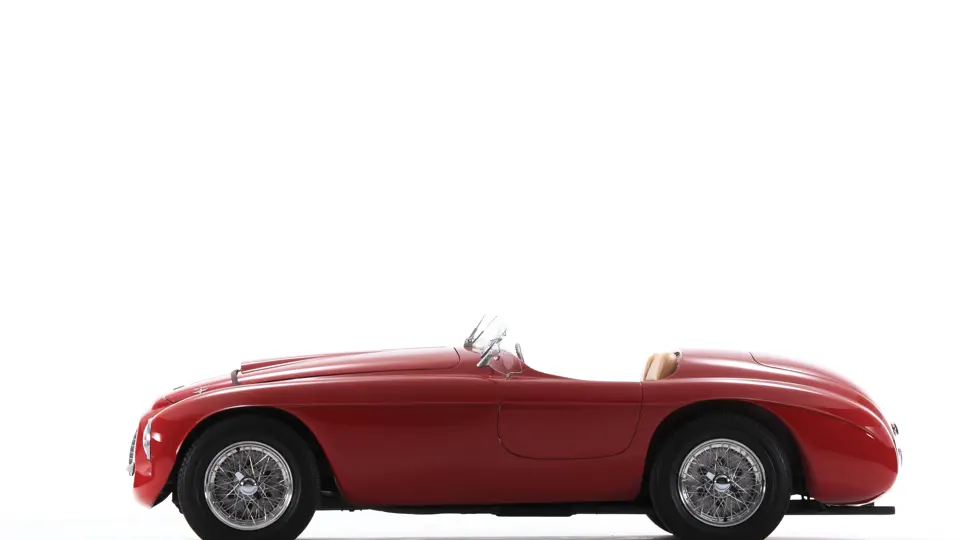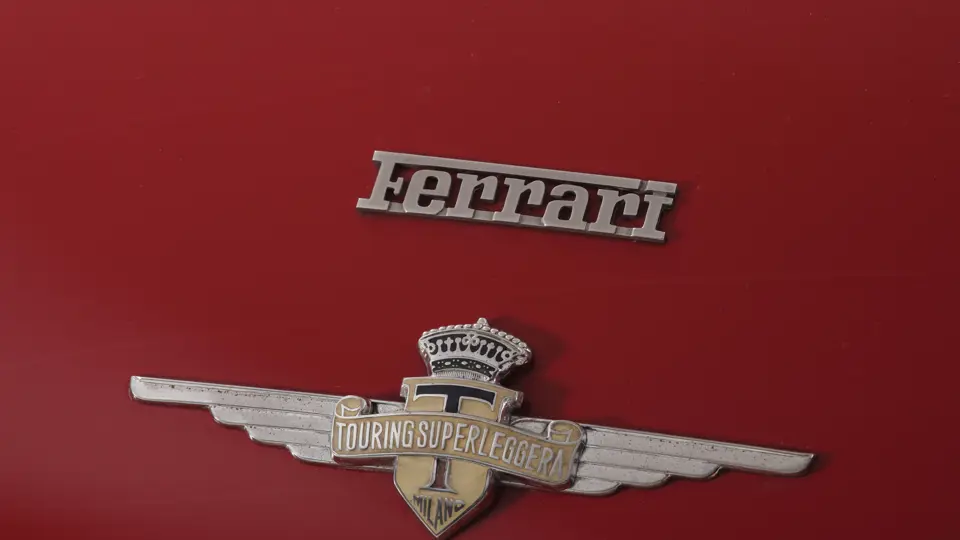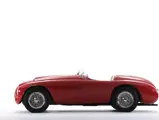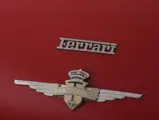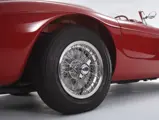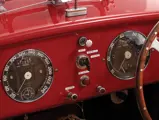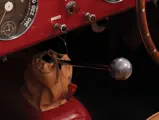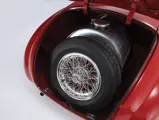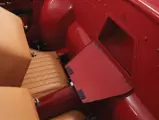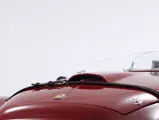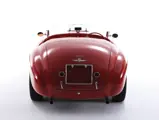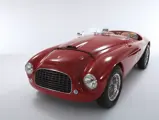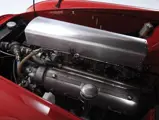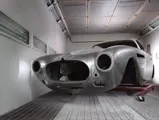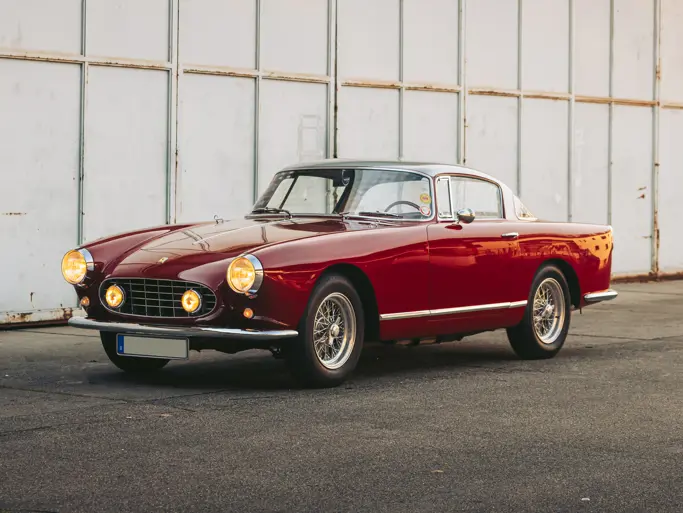
1950 Ferrari 166 MM Barchetta in the style of Touring
{{lr.item.text}}
$3,080,000 USD | Sold
{{bidding.lot.reserveStatusFormatted}}
- One of three 1950 Touring Barchettas originally built with one door
- The 15th of 25 examples built
- Finished 2nd overall at the 1950 Mille Miglia
- Documented history by Marcel Massini
- Numerous in-period 1st place finishes
- Driven by Ascari, Chinetti, and Gonzales
- Overwhelming provenance as an early factory racing 166 MM
170 bhp, 2,562 cc single overhead-camshaft V-12 engine with three Weber 36 DCF carburetors, five-speed manual gearbox, independent front suspension with transverse leaf springs, rigid rear axle with semi-elliptic leaf springs, four-wheel drum brakes, and tubular steel frame. Wheelbase: 88.6 in. (2,250 mm)
Very few sports racers from the early days of Ferrari maintain a more historically significant perch than the vaunted 166 MM, which, in many respects, can be considered the car that started it all. Though the 166 model was not Ferrari’s first, but rather a bored-out development of the 125 S motor engineered by former Vittorio Jano apprentice Giacchino Colombo, the 166 became Ferrari’s first mainstay competition winner, dominating the 1949 season and directly leading to the progression of increasingly potent Ferrari sports racers that followed, from the 212 to the 375 Plus and beyond.
The earliest Ferrari 125 S examples wore coachwork that was almost monoposto in style, being slightly revised with cycle-wing fenders for the initial 166 Spider Corsas. On September 14, 1948, Ferrari used the Torino Motor Show to debut the 166 MM, a more becoming version of the 166 with new barchetta coachwork by Touring of Milan. The show car, chassis number 0002M, marked a milestone for Ferrari in a number of ways. In addition to being the first of a long line of Ferrari barchettas and similarly styled spiders, the car was the initial example of Maranello’s now highly scrutinized chassis number sequence, including being the first even-numbered Ferrari race car. Chassis 0002M was also the first of many Ferraris to feature the MM suffix, which honored the 166’s victory at the 1948 Mille Miglia. A 166 MM driven by Clemente Biondetti and Ettore Salani fittingly went on to win the 1949 Mille as well.
Chassis number 0038M is the fifteenth of twenty-five 166 MM Touring Barchettas built, and one of just three such 1950 factory racing barchettas fitted with only one door, as the “passenger” side featured sealed bodywork and an extra fuel tank. Manufactured in early 1950, chassis 0038M was equipped with a long bonnet and was soon upgraded to 195 S engine specifications. Driven by the legendary Alberto Ascari, the car finished 1st overall at the Grand Prix of Luxemburg on March 18, 1950.
On April 23, the car’s strong competition record was further sealed with a 2nd place finish at the Mille Miglia, with Dorino Serafini and Salani at the wheel. The duo then took the checkered flag at the Coppa della Toscana on June 4, 1950.
On June 24, 1950, chassis 0038M was entered at the 24 Hours of Le Mans. Though the car did not finish the race, the occasion was notable for the presence of two of history’s great drivers, future Ferrari impresario Luigi Chinetti and Le Mans regular Pierre Louis-Dreyfus. On July 16, Franco Cornacchia drove this Barchetta to 2nd overall at the IV Coppa d’Oro delle Dolomiti, while the team of Serafini and Salani again took a win at the Giro delle Calabrie on August 6.
Shortly thereafter, 0038M received some body modifications, which principally consisted of repositioning the air intake scoop and leather straps on the hood. These adjustments, surely intended to aid engine breathing, contributed to victory at the Daily Express Trophy at Silverstone on August 26, while driven by Ascari, and Giovanni Bracco’s 1st place finishes at the Bologna-Raticosa Hillclimb of September 17, the Vermicino-Rocca di Papa Hillclimb on October 22, and the Catania-Etna Hillclimb on October 29.
Louis Klemantaski tells an evocative story of meeting Ascari during the return trip from Silverstone.
We had a drink or two on the boat, and Ascari said, ‘How do I get to London? I don’t know the road at all.’ I offered to tell him how to go. ‘Will you come with me?’ he said. After we got the barchetta through customs and all that, Ascari said, ‘Oh, you drive on the wrong side of the road here, would you like to drive to London?’ ‘Indeed yes,’ I replied, and we set off, with Serafini following.
I found the Ferrari a delightful car. Pretty soon I was going along at 90 miles per hour or so—there was not much traffic in those days and you could do that sort of thing since there were no speed limits—when out of the corner of my eye, I could see Ascari getting rather agitated. Well, I’m not doing anything dangerous I thought to myself. Finally, I looked at him inquiringly, and he pointed down at the gear lever and held up five fingers. I had never got it into fifth! Five speed gearboxes were not a normal thing then. So at last I put it into fifth and he was soon drowsing away. We were great friends ever after.
In early 1951, in preparation for the season, further work was undertaken on 0038M’s front end, with the bonnet being shortened and an extra radiator-cooling grille added above the main grille. In this configuration, the 166 MM was entered in the XVIII Mille Miglia on April 28, 1951, driven again by Serafini and Salani, but unfortunately, the car did not finish after running off course during a particularly hard turn.
Chassis 0038M then took an interesting twist of fate, as it was essentially rebuilt as a 212 Coupe with new coachwork by Vignale and a new 212 motor. Finished in a handsome livery of dark red with a grey roof, the Vignale Coupe was delivered to the famous Argentine racer José “Froilán” González, the onetime Ferrari team driver who had presided over the company’s first-ever Sports Car Championship win at the British Grand Prix at Silverstone in 1951. Legend has it that Enzo Ferrari owed González money for his services, and the re-bodied 0038M was a gift made in lieu of payment.
It is believed that González only retained ownership of the car at his Buenos Aires home for a short period before selling it to Raul Guillermo Decker, also a resident of Buenos Aires. From this point forward, the car became a somewhat regular participant in Argentina’s budding racing scene, placing 4th overall twice at the Autodromo de la Ciudad de Buenos Aires, driven by Nestor Pernigotti, during the 1962 season. Trading hands to Ernesto Dillon, of Argentina, during the early 1970s, the car was acquired by Eduardo Salzman, of Buenos Aires, in 1978, and in 1980, it was sold by Hector Mendizabal to an American owner.
By 1983, chassis 0038M had returned to Italy, owned by Ugo Isgro, of Padova. Still wearing the Vignale coachwork, the aging car was restored by the renowned Dino Cognolato’s Carrozzeria Nova Rinascente, in Padua. Mr. Isgro took the refurbished 166 MM to numerous enthusiast events over the ensuing years, including the Mille Miglia in 1985 and 1986, and the 80 Anni di Sport con la Ferrari in Modena on September 27, 1985. Offered in 1987, this Barchetta was acquired by well-known Ferrari trader Michael Sheehan, of Costa Mesa, California, before being sold to Japanese collector Yogi Oyama in October 1987.
Recognizing the somewhat inauthentic presentation of an original 166 MM with such significant competition provenance, Mr. Oyama commissioned a re-body of the car back to its original Touring-style barchetta coachwork. Still possessing considerable provenance of its own, the Vignale Coupe body was retained and is offered alongside the car today. Mr. Oyaa went on to enjoy 0038M in its original configuration, campaigning in the Mille Miglia in 1996, 1997, and 1999, and the 5th La Festa Mille Miglia in Japan in 2002. The car was also the subject of a cover feature in the November 1997 issue of the Italian magazine Ruoteclassiche.
In 2003, chassis 0038M was purchased by the consignor, another Japan-based enthusiast, and has since participated in the Mille Miglia three more times; it was also displayed at the DIVA exhibit at Brixia in Brescia in May 2010. At the 2010 Mille Miglia, this Barchetta claimed the distinction of being the highest-finishing Ferrari in the field, a strong indication of its continued mechanical preparation.
Accompanied by the interim Vignale body, 0038M is an authentically presented example of one of the rarest and most important early Ferrari sports racers. It claims legitimate racing provenance, including 2nd place at the 1950 Mille Miglia, and has been driven by, and associated with, some of the greatest names in racing lore, including Alberto Ascari, Luigi Chinetti, and Froilán González. It is rare for an early racing barchetta of this magnitude to appear on the open market, and Maranello collectors and casual tifosi alike will surely take note of the unique opportunity afforded by this scintillating Ferrari classic.
Please note that an import duty of 2.5% of the purchase price is payable on this car if the buyer is a resident of the United States.




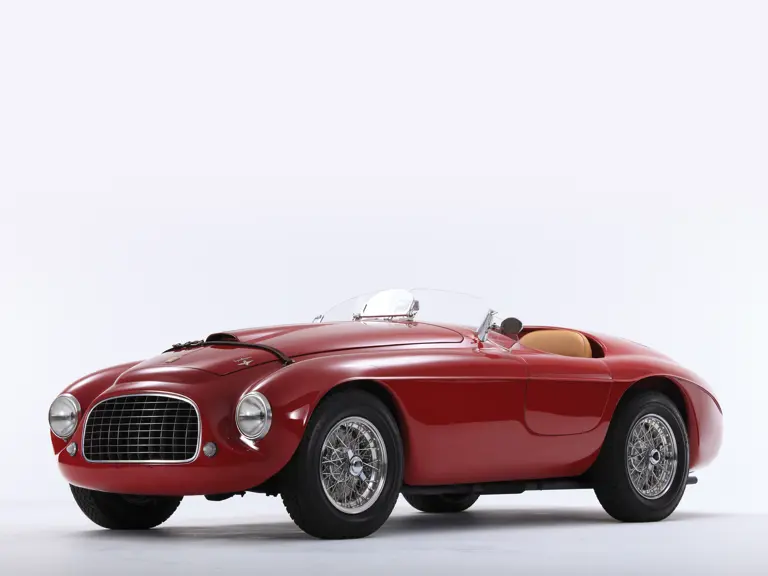
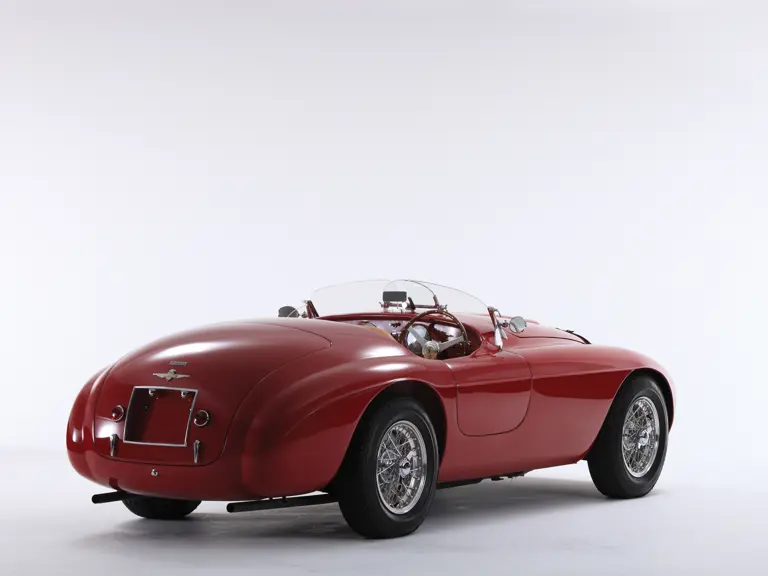
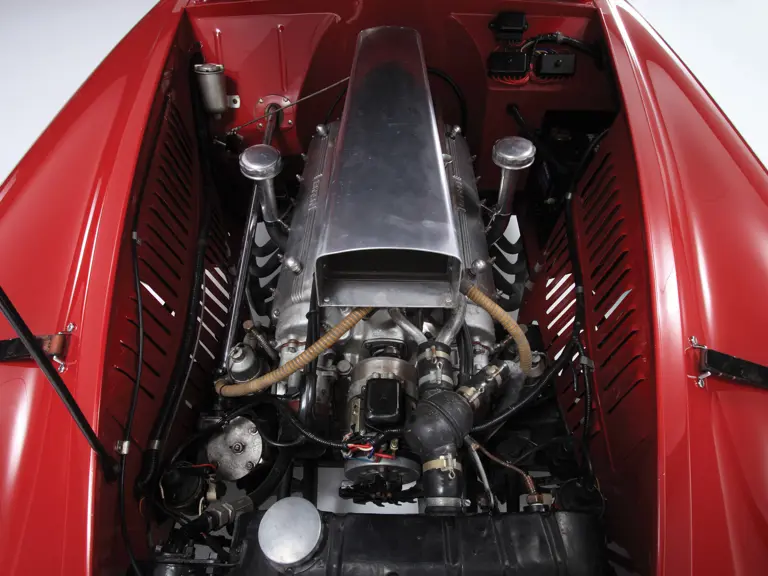
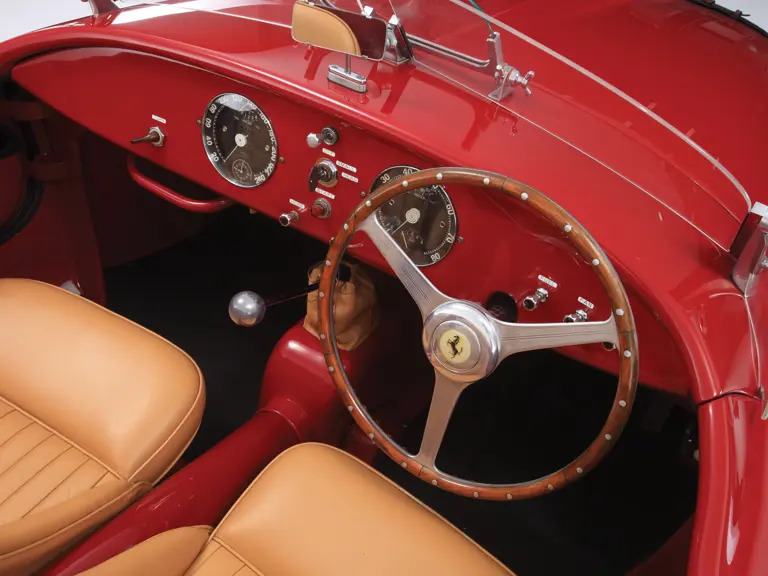
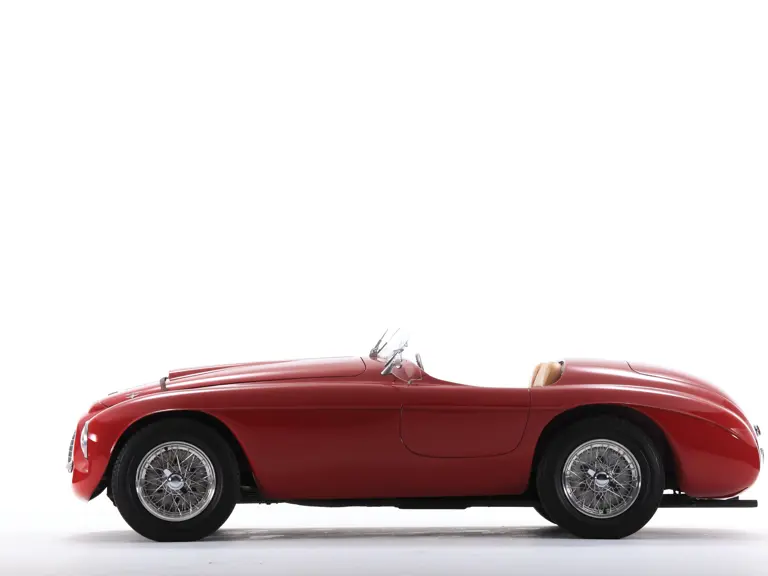
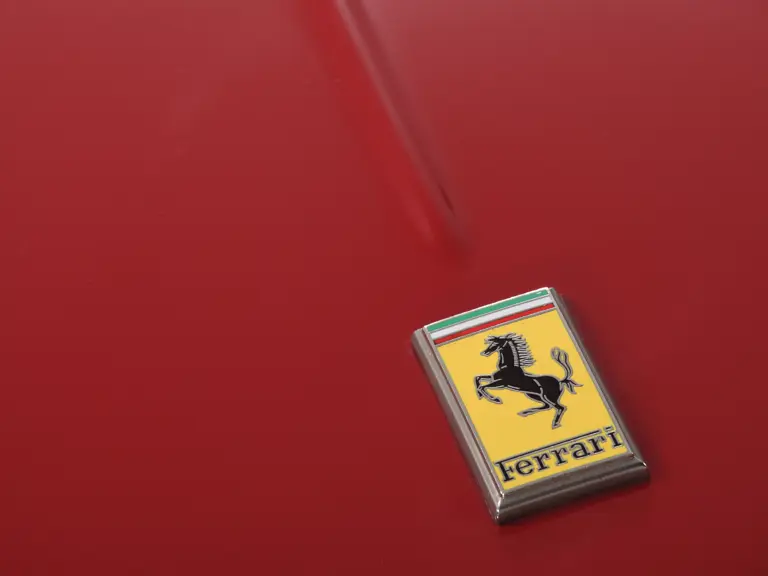
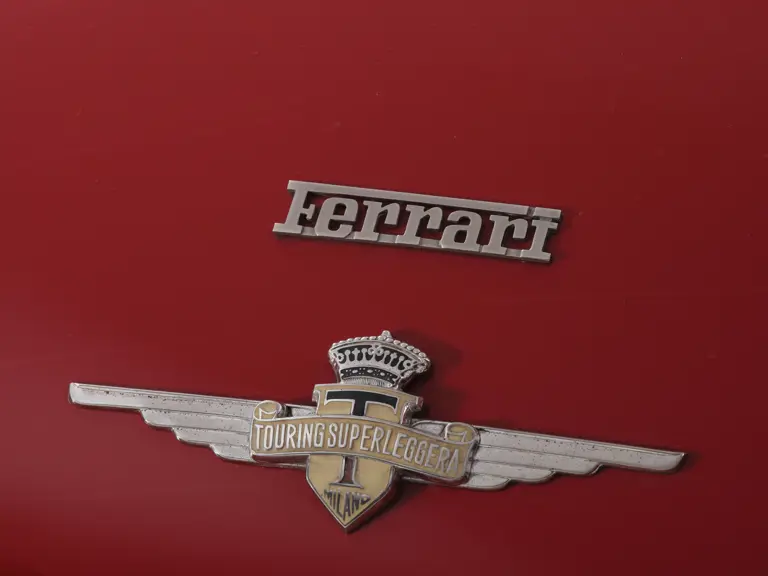
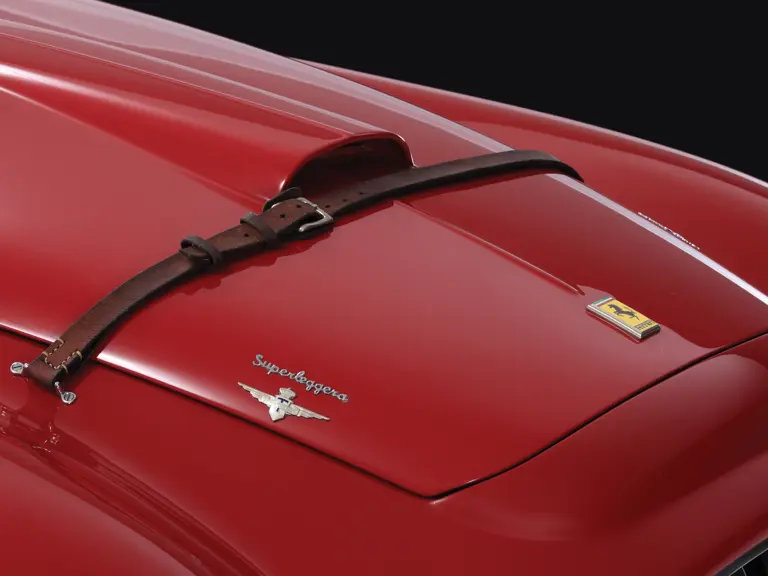

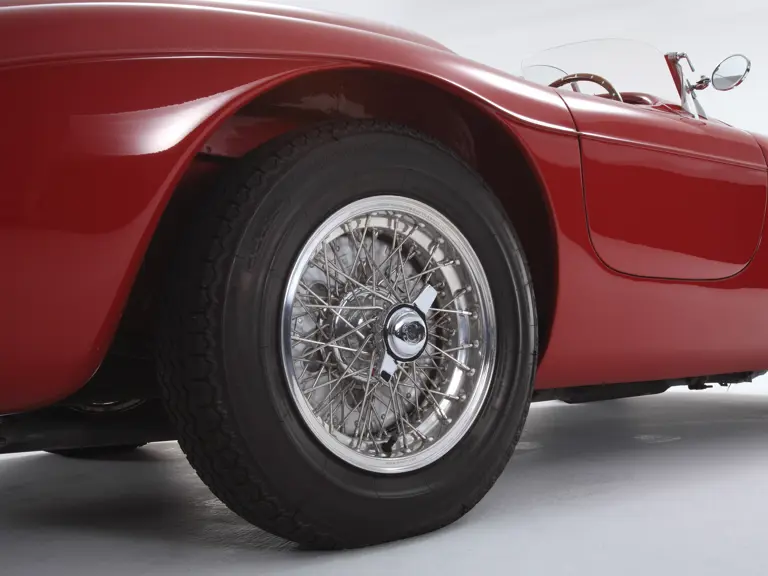
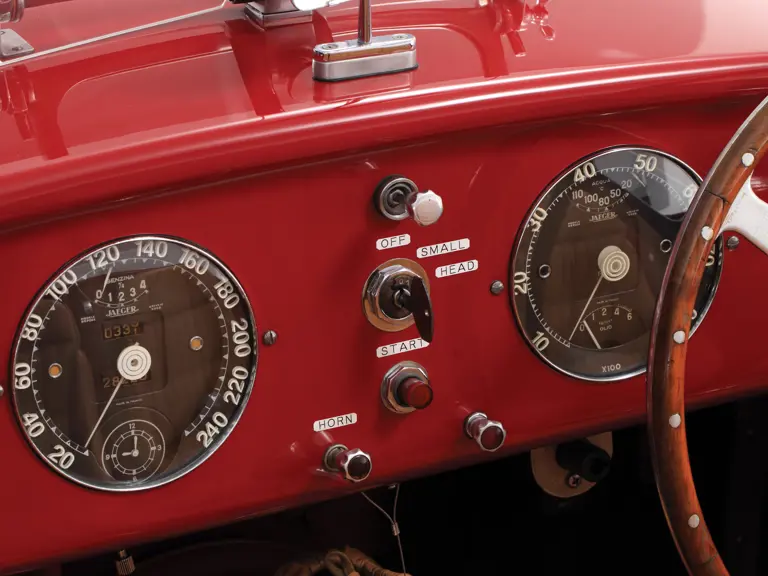
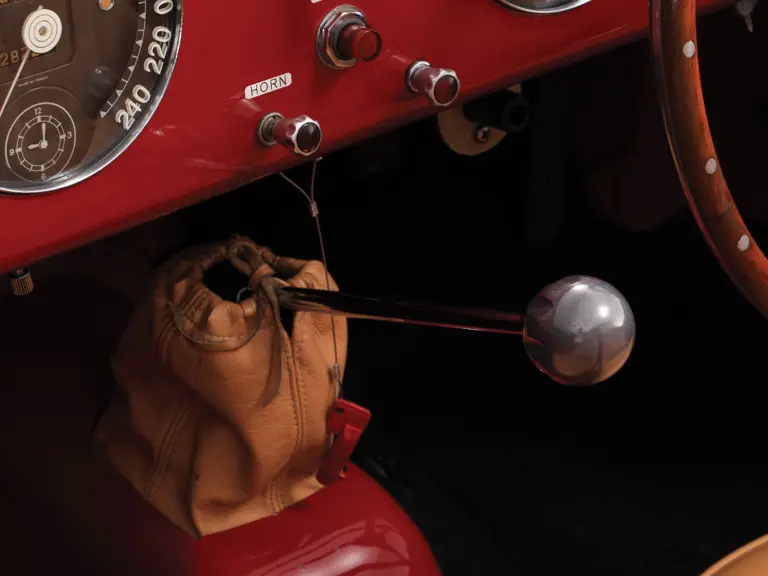
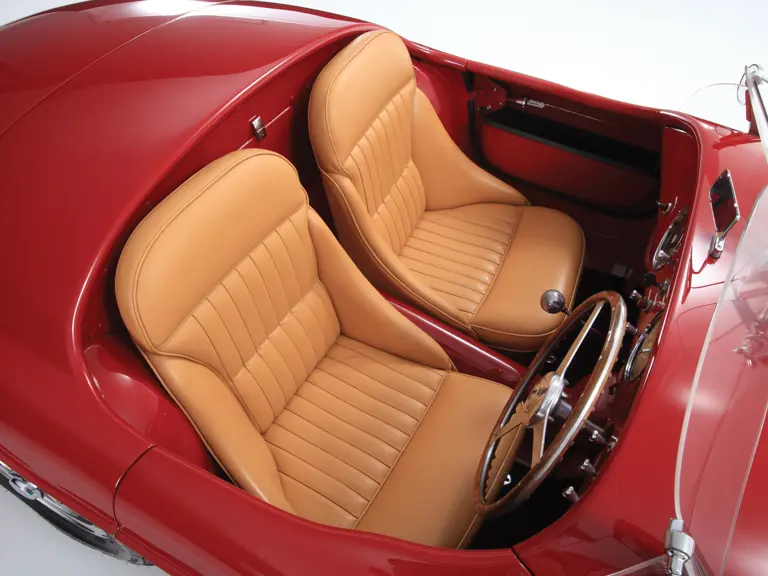
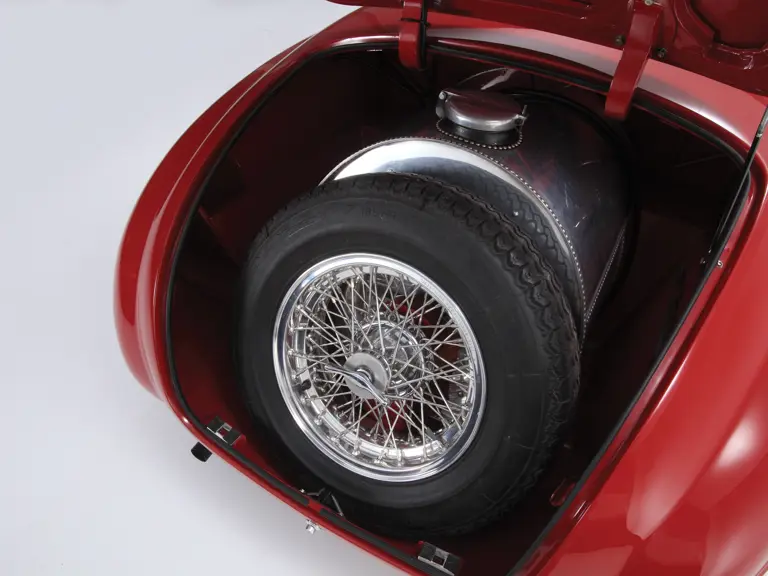
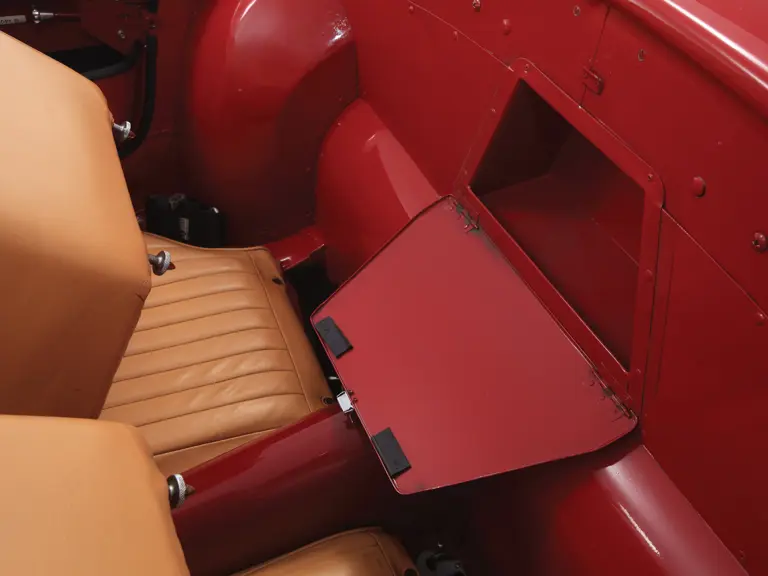
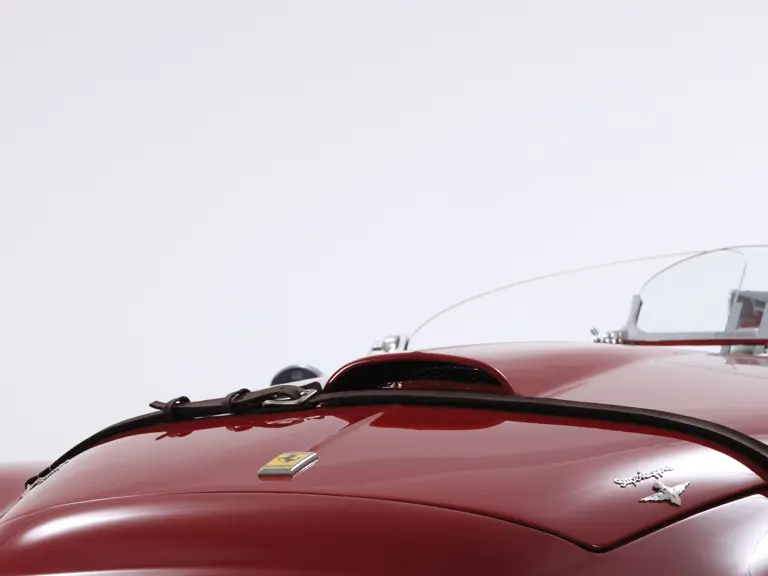
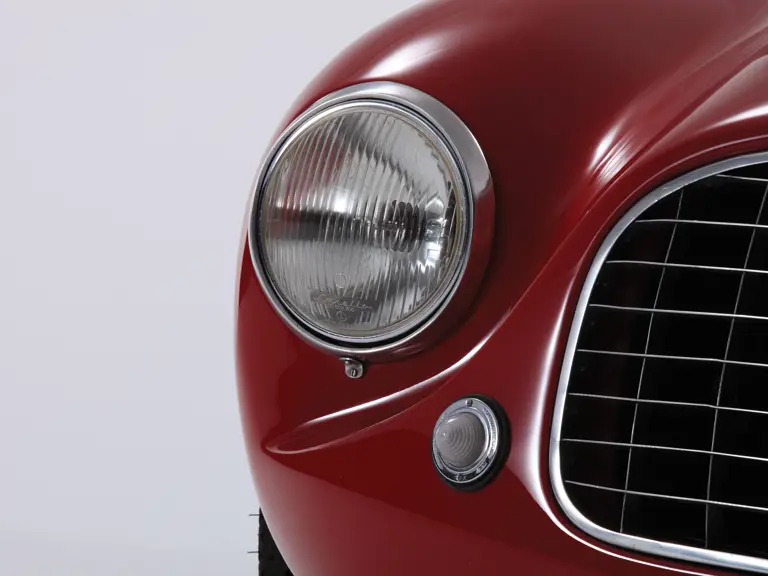

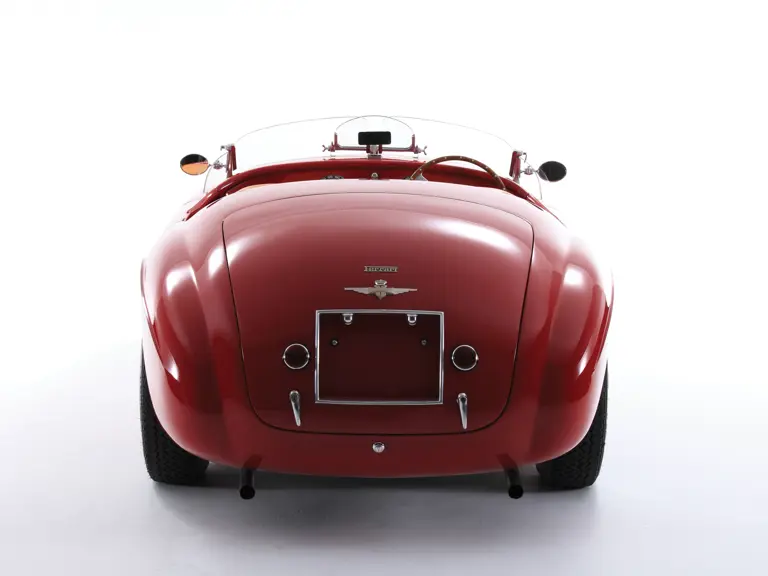
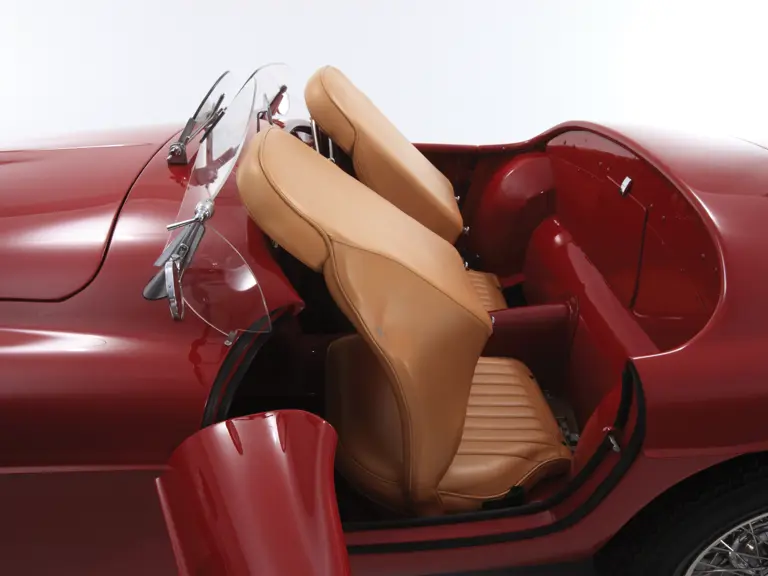
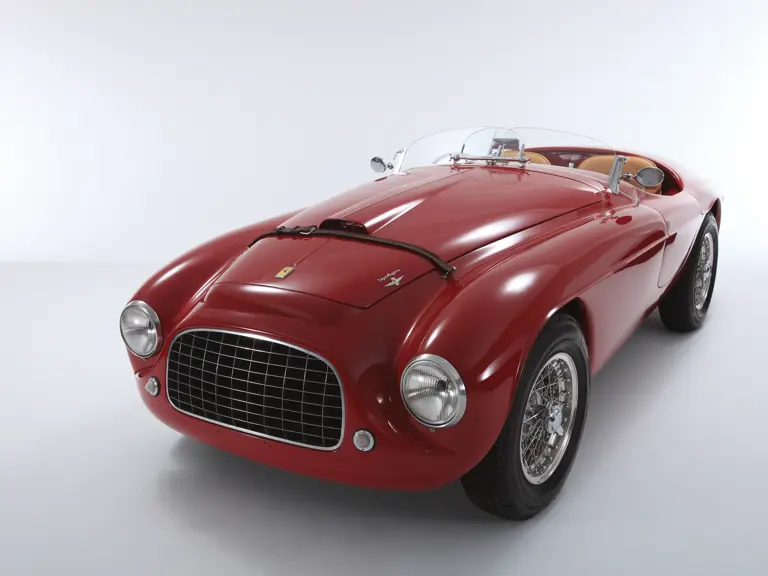

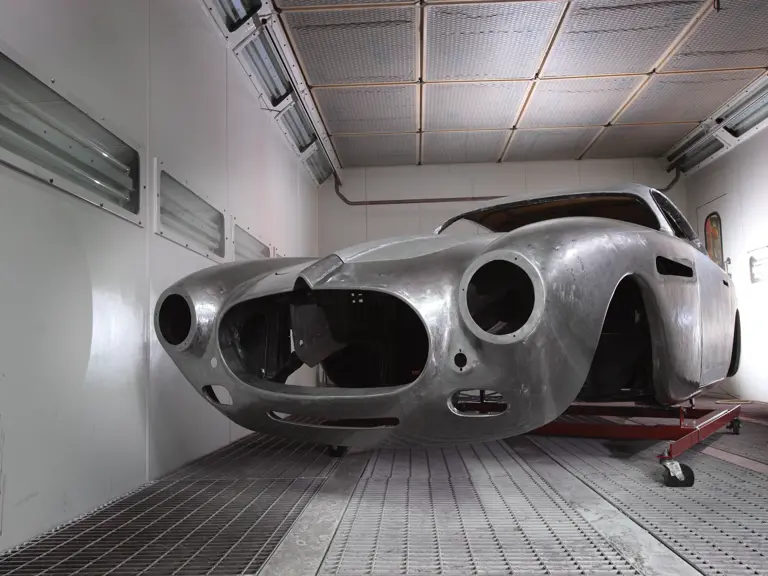
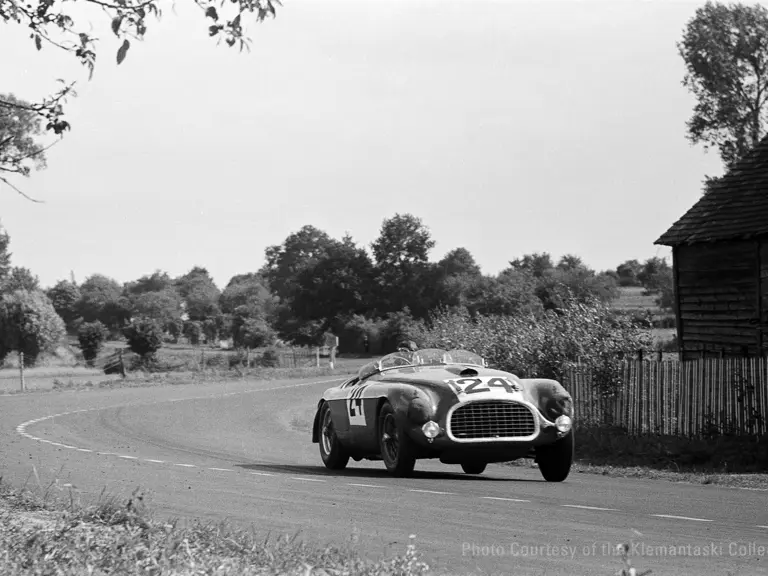
 | Monterey, California
| Monterey, California
